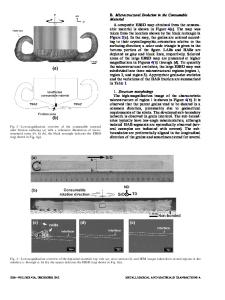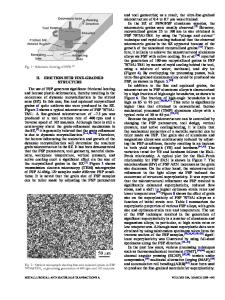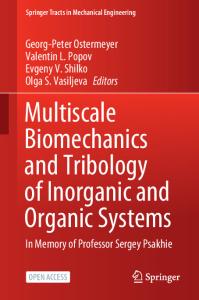Restoration Mechanisms During the Friction Stir Processing of Aluminum Alloys
- PDF / 1,672,944 Bytes
- 6 Pages / 593.972 x 792 pts Page_size
- 6 Downloads / 337 Views
minum alloys with copper and magnesium as the major alloying elements are widely used in structural applications due to their high strength to weight ratio and good corrosion resistance.[1] Friction stir processing is a severe plastic deformation (SPD) technique, introduced by Mishra et al.[2] for producing ultra-fine grained (UFG) materials with improved properties. In context of common SPD methods such as high pressure torsion, equal channel angular extrusion and accumulative roll bonding,[3–5] FSP can produce bulk UFG materials in a single pass. In FSP, a non-consumable rotating tool with a shoulder and pin is traversed along the specific region on a workpiece. Various mechanisms leading to the texture and microstructural evolution has not been clearly understood for this process. Although most of the FSP research has been done on FSP of aluminum alloys, the underlying micro-mechanisms of deformation and restoration is still a mystery. An elementary
NARESH NADAMMAL, Ph.D. Student, and SATISH V. KAILAS, Professor, are with the Department of Mechanical Engineering, Indian Institute of Science, Bangalore 560012, Karnataka, India. Contact e-mail: [email protected] JERZY SZPUNAR, Professor, Canada Research Chair (Tier I) of Advanced Materials for Clean Energy, is with the Department of Mechanical Engineering, University of Saskatchewan, Saskatoon, SK S7N 5A9, Canada. SATYAM SUWAS, Associate Professor, is with the Department of Materials Engineering, Indian Institute of Science, Bangalore, 560012, Karnataka, India. Manuscript submitted November 13, 2014. METALLURGICAL AND MATERIALS TRANSACTIONS A
view point on this subject was presented by McNelley et al.,[6] where the authors gave a due emphasis on the recrystallization mechanisms during both FSW and FSP of aluminum alloys. Dynamic recovery along with geometric dynamic recrystallization and particle stimulated nucleation (PSN) was identified as the plausible mechanisms in the stir zone of the FSP in alloys 2219 and 5083. However, these studies do not emphasize on the evolution of texture in detail[7,8] and the mechanisms involved do not lead to any conclusion. The objective of the present work is to improve the understanding on the correlation of crystallographic texture and microstructure in FSP as applicable to aluminum alloys. It is possible that in a process like FSP where the shear directions change in different regions, the localized texture measurements by EBSD do not reveal the overall texture present in the nugget zone. Since the bulk mechanical properties of materials depend on the overall crystallographic texture, it is highly desirable to examine the overall texture of the nugget zone. The present study aims at examining the same. Materials selected in the current study were two of the heat treatable aluminum alloys used in structural applications, 2024-T3 and 2219-T87 and a strain hardenable alloy 5086-O. Chemical composition of these three alloys is given in Table I. Thickness of the as received 2024 and 5086 plates were 6 mm, whereas 2219 plat
Data Loading...










